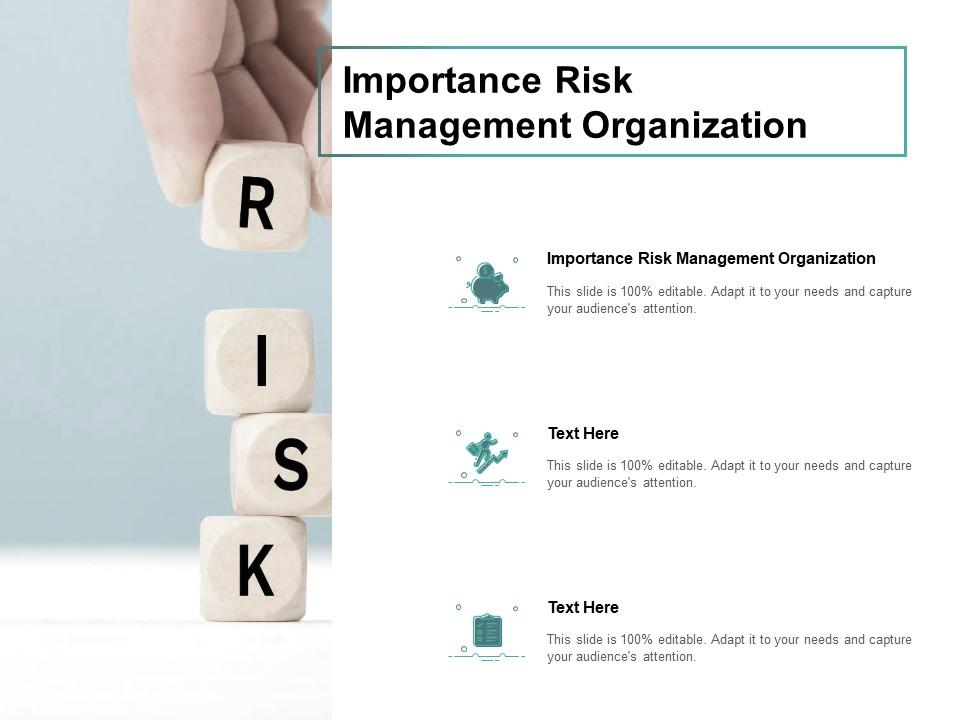Enhancing Company Efficiency Through the Importance of Risk Management
The Relevance of Understanding the Significance of Risk Management in Various Industries

The Core Idea of Risk Management and Its Purpose
Risk Management, the keystone of lots of markets, hinges on the recognition, analysis, and mitigation of uncertainties in a company environment. By properly recognizing prospective risks, businesses can develop techniques to either prevent these threats from taking place or reduce their impact. As soon as threats have been determined and examined, the mitigation procedure includes designing methods to reduce their possible impact.
Advantages of Applying Risk Management in Service Operations

Introducing the Function of Risk Management in Different Industries
While every market confronts its one-of-a-kind collection of threats, the implementation of Risk Management approaches continues to be a common in their quest of sustainability and growth. In the medical care sector, Risk Management requires making sure patient safety and data protection, while in financing, it entails mitigating financial investment risks and guaranteeing regulatory compliance (importance of risk management). Building business concentrate on employee safety and security, task hold-ups, and spending plan overruns. In the innovation industry, business mitigate cybersecurity hazards and innovation obsolescence. Ultimately, the duty of Risk Management throughout markets is to recognize, evaluate, and alleviate risks. It is a crucial part of calculated planning, enabling organizations to safeguard their possessions, make the most of chances, and accomplish their goals.
Real-life Study Showing Effective Risk Management
To comprehend the significance of Risk Management in these many markets, one can want to a number of real-life circumstances that show the effective application Find Out More of these measures. As an example, in the power sector, British Oil established Risk mitigation prepares post the 2010 Gulf of Mexico oil spill. They applied much better security treatments and stricter guidelines which dramatically decreased more mishaps. In money, Goldman Sachs efficiently browsed the 2008 financial crisis by recognizing prospective mortgage-backed securities dangers early. Toyota, upload the 2011 quake in Japan, modified its supply chain Management to minimize disturbance dangers. These instances demonstrate just how industries, learning from dilemmas, properly used Risk Management methods to minimize future risks.
Future Patterns and Growths in Risk Management Techniques
As the globe proceeds to progress, so as well do the trends and advancements in Risk Management strategies. Fast improvements in innovation and information analytics are reshaping the Risk landscape. Large data and AI are check my blog now important in anticipating and alleviating risks. Organizations are leveraging these devices to develop predictive designs and make data-driven decisions. Cybersecurity, when an outer concern, has catapulted to the center of Risk Management, with approaches concentrating on discovery, reaction, and avoidance. The assimilation of ESG (Environmental, Social, Administration) elements into Risk Management is one more growing pattern, mirroring the enhancing recognition of the function that social and ecological threats play in service sustainability. Thus, the future of Risk Management learn this here now hinges on the fusion of advanced innovation, cutting-edge methods, and an alternative strategy.
Conclusion
In final thought, understanding the relevance of Risk Management across a spectrum of industries is essential for their durability and success. Inevitably, successful Risk Management contributes to more lasting and resistant organizations, highlighting the significance of this method in today's extremely affordable and vibrant service setting.
While every market challenges its unique set of threats, the application of Risk Management strategies stays a typical denominator in their quest of sustainability and growth. In the medical care industry, Risk Management entails making certain person safety and information security, while in finance, it involves mitigating investment threats and ensuring governing compliance. Ultimately, the duty of Risk Management throughout markets is to determine, assess, and reduce dangers. These situations show how sectors, finding out from dilemmas, properly used Risk Management techniques to decrease future threats.
